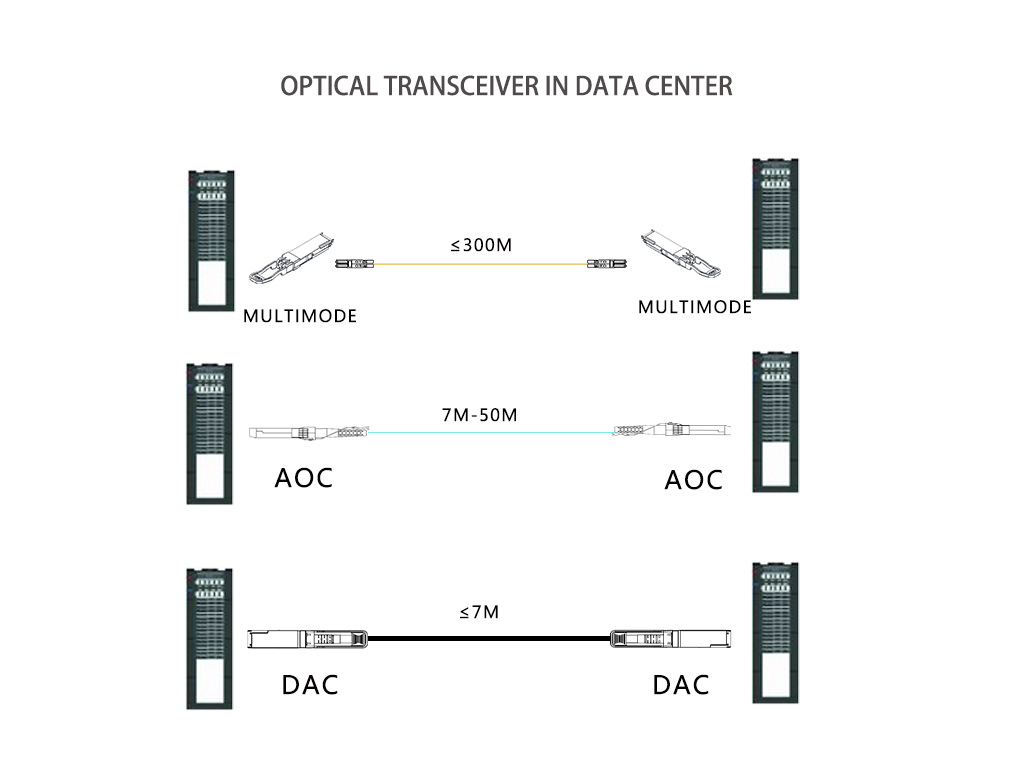The construction of data center requires a large number of switches, routers, firewalls and other equipment. Optical transceivers are indispensable among them. Well, there are all kinds of optical transceivers, but not all of them are suitable for internal use in data centers. We all know that the internal transmission of the data center requires extremely high bandwidth, and they are for short-distance transmissions. In this case, single-mode modules will be hardly used and mostly used high-speed multi-modes of 10 Gigabit and above transceiver, AOC, DAC. Then what are the advantages of them?

We take the commonly used OM3 multi-mode patch cords for connection. The transmission distance of 10 Gigabit multi-mode optical transceivers can reach 300M, 25G multi-mode optical transceivers can reach 100M, 40G multi-mode optical transceivers can reach 150M, and 100G multi-mode optical transceivers can transmit 100M. They are usually used between different racks that are not adjacent, with the distance of 50 meters to 100 meters. Although AOC can be used for transmission, it needs to be customized before leaving the factory. It may cause unstable performance if the distance is too long. Multi-mode optical transceivers are more flexible in use.
AOC active optical cable can reach hundreds of meters, but normally produced within 50m. It is suitable for adjacent racks or short-distance non-adjacent racks. The transmission distance is mostly between 7M-50M. AOC active optical cable has lower cost and lower power consumption than two modules plus a jumper. In the case of a large cost investment in the data center, cost saving is particularly important.
DAC high-speed cables can only transmit within 7M, and are suitable for the same rack or adjacent racks. Compared with AOC and optical transceivers, the cost and power consumption are the lowest.

